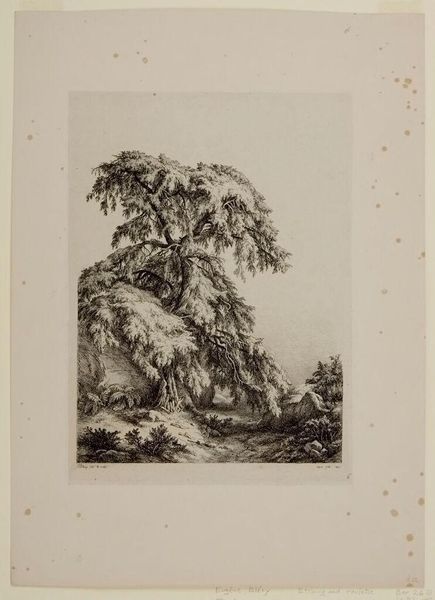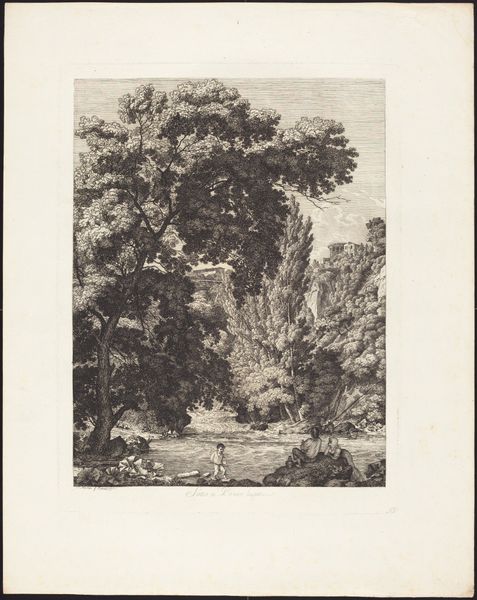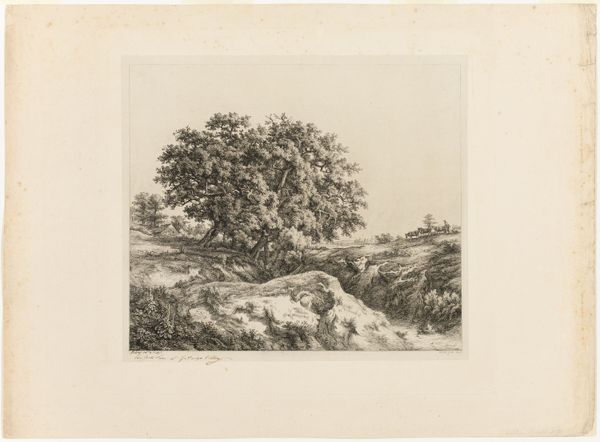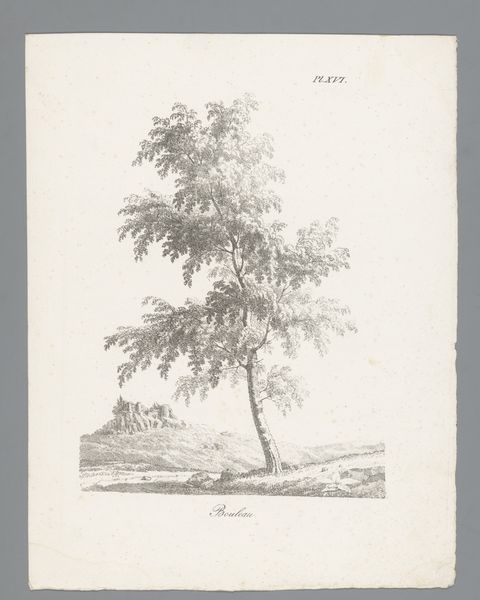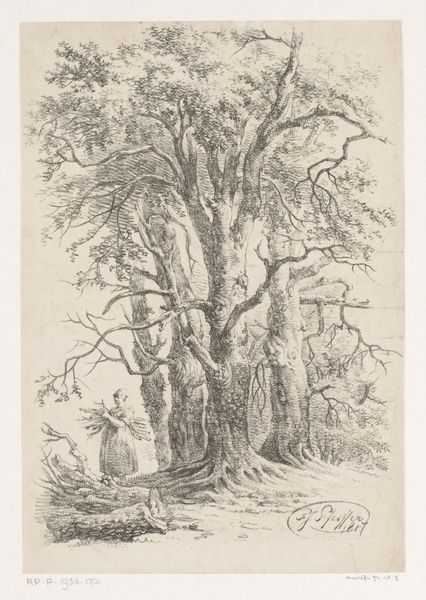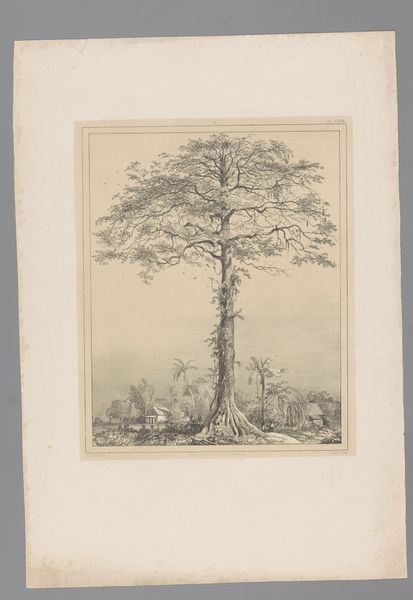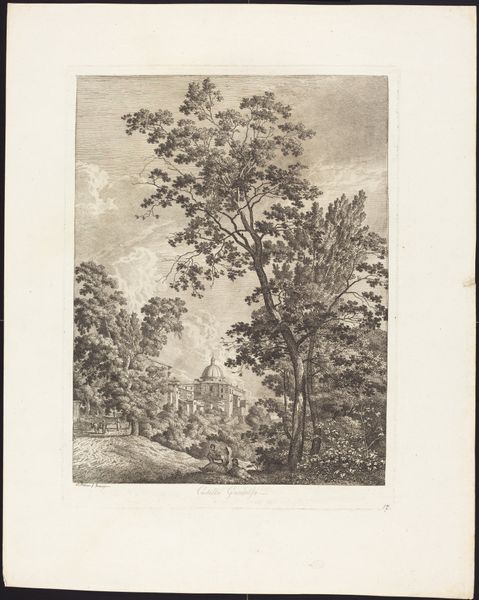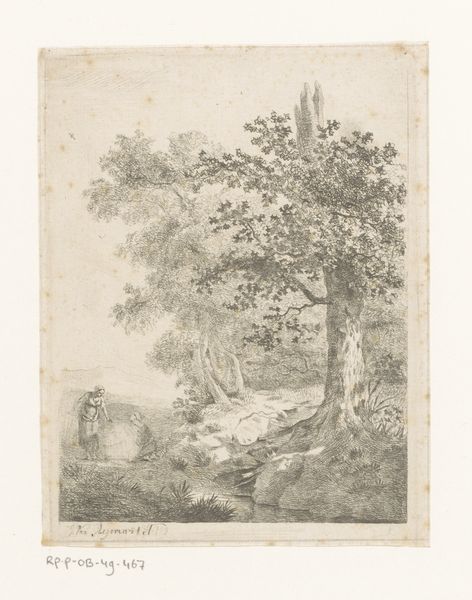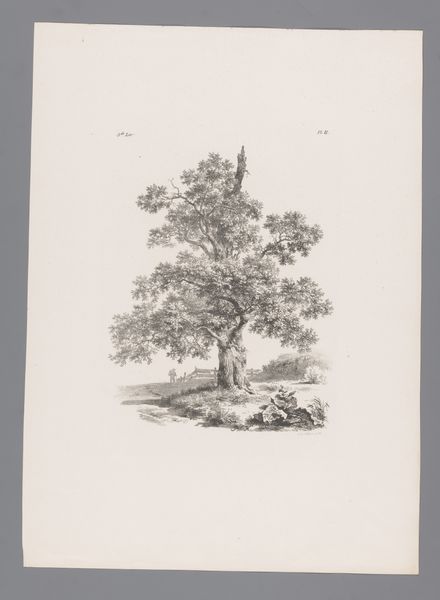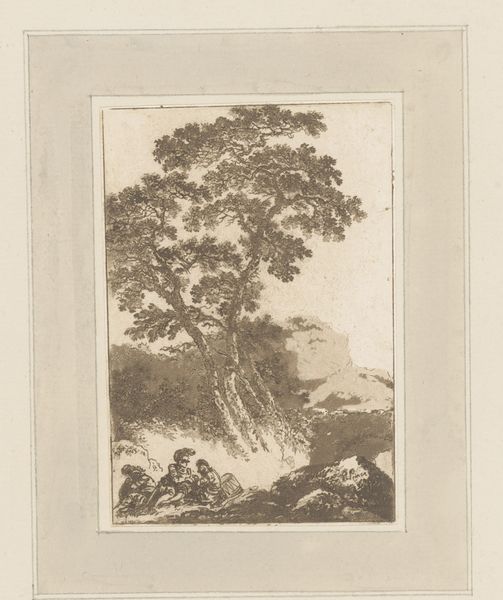
drawing, print, etching
#
tree
#
drawing
# print
#
etching
#
landscape
#
romanticism
#
realism
Dimensions: Sheet: 14 5/8 × 10 1/4 in. (37.2 × 26 cm) Plate: 11 1/16 × 8 3/16 in. (28.1 × 20.8 cm)
Copyright: Public Domain
Curator: Eugène Bléry’s “The Juniper Tree, Fontainebleau,” etched in 1840, invites us to consider the romantic relationship between humanity and nature. Editor: My first impression is one of stillness and age. The density of detail almost makes the tree feel like it is pushing against the picture plane, weighted down by time. Curator: It is fascinating to consider Bléry's choice of subject. Juniper trees are often symbolic, tied to notions of purification and resilience in different cultural contexts. In a time of increasing industrialization, was Bléry subtly commenting on the need to preserve the sanctity of the natural world? Editor: That’s compelling. Visually, the juniper presents a paradox. While detailed and realistic, it almost looks like frozen lace. Juniper’s association with immortality connects to enduring forms, as opposed to industrial output with more fluid ties to cultural memory and symbolic understanding. Curator: Yes, there is also an element of melancholy, perhaps indicative of the Romantic movement’s fascination with the sublime and the inevitable encroachment of civilization. Bléry captures this tension using a method of detailed realism, the tree appearing almost like a defiant stand against progress. The interplay between light and shadow really captures the complexity of that feeling. Editor: Thinking about light, the etcher created contrast, with a stark visual tension. Darker tones pool underneath its branches, and create a sense of sanctuary that almost encourages retreat from brighter realities, that feels incredibly deliberate to invite particular reflection from viewers. Curator: Perhaps "sanctuary" is precisely what Bléry hoped to convey, a haven, which carries resonance for the human condition in general during moments of rapid change. Editor: It has given me plenty to contemplate; seeing this work makes one think about how art can capture the depth and density of our past as a reference point for understanding identity today. Curator: And it underlines the crucial, continuing need for vigilance against those forces seeking to diminish our connection to our shared planet.
Comments
No comments
Be the first to comment and join the conversation on the ultimate creative platform.
